
The Enchanting Silesian Beskids
Discover the Silesian Beskids in Poland: A perfect blend of nature's beauty, rich culture, and thrilling winter sports, making it an ideal destination for all travelers.
Nestled in the southern region of Poland, the Silesian Beskids offer a picturesque escape into nature's embrace. This mountain range is part of the Western Beskids and is renowned for its lush forests, stunning peaks, and charming villages. The highest peak, Skrzyczne, stands tall at 1,257 meters, providing breathtaking views and a variety of hiking trails for all skill levels. Whether you're an avid hiker or simply looking for a peaceful retreat, the Silesian Beskids won't disappoint. One of the most attractive features of the Silesian Beskids is its rich cultural heritage. The region is home to traditional highlander culture, which can be experienced through local festivals, music, and cuisine. Visitors can explore the quaint town of Wisła, known for its wooden architecture and as the birthplace of famous ski jumper Adam Małysz. Don’t miss the opportunity to visit the Beskid Museum, which offers a glimpse into the region's history and traditions. The Silesian Beskids are also a haven for winter sports enthusiasts. During the colder months, the mountains transform into a winter wonderland, with popular ski resorts such as Szczyrk and Ustroń offering excellent facilities for skiing, snowboarding, and more. The well-maintained slopes and cozy mountain lodges make it an ideal winter destination for families and solo travelers alike. From scenic hiking trails and cultural experiences to thrilling winter sports, the Silesian Beskids provide a diverse range of activities that cater to all types of travelers. Immerse yourself in the natural beauty and rich traditions of this enchanting region, and create memories that will last a lifetime.
Local tips in Silesian Beskids
- Visit outside peak season to enjoy the tranquility and avoid crowds.
- Try local highlander dishes such as oscypek (smoked cheese) and kwaśnica (sauerkraut soup).
- Bring comfortable hiking boots for exploring the numerous trails.
- Check weather conditions before heading out, especially in winter.
- Learn a few basic Polish phrases; locals appreciate the effort.
The Enchanting Silesian Beskids
Nestled in the southern region of Poland, the Silesian Beskids offer a picturesque escape into nature's embrace. This mountain range is part of the Western Beskids and is renowned for its lush forests, stunning peaks, and charming villages. The highest peak, Skrzyczne, stands tall at 1,257 meters, providing breathtaking views and a variety of hiking trails for all skill levels. Whether you're an avid hiker or simply looking for a peaceful retreat, the Silesian Beskids won't disappoint. One of the most attractive features of the Silesian Beskids is its rich cultural heritage. The region is home to traditional highlander culture, which can be experienced through local festivals, music, and cuisine. Visitors can explore the quaint town of Wisła, known for its wooden architecture and as the birthplace of famous ski jumper Adam Małysz. Don’t miss the opportunity to visit the Beskid Museum, which offers a glimpse into the region's history and traditions. The Silesian Beskids are also a haven for winter sports enthusiasts. During the colder months, the mountains transform into a winter wonderland, with popular ski resorts such as Szczyrk and Ustroń offering excellent facilities for skiing, snowboarding, and more. The well-maintained slopes and cozy mountain lodges make it an ideal winter destination for families and solo travelers alike. From scenic hiking trails and cultural experiences to thrilling winter sports, the Silesian Beskids provide a diverse range of activities that cater to all types of travelers. Immerse yourself in the natural beauty and rich traditions of this enchanting region, and create memories that will last a lifetime.
When is the best time to go to Silesian Beskids?
Iconic landmarks you can’t miss
Park Krajobrazowy Beskidu Śląskiego
Explore the breathtaking landscapes and diverse wildlife of Park Krajobrazowy Beskidu Śląskiego, a natural gem in Poland's Beskid Mountains.
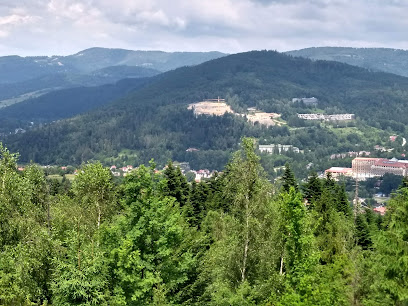
Forest Park of Surprises
Unveil the magic of the Forest Park of Surprises, where adventure meets nature in the heart of Ustroń, Poland.

Monument Bolek and Lolek
Discover the whimsical charm of Bolek and Lolek Monument in Bielsko-Biała, a delightful tribute to Poland's beloved cartoon characters.

Great lookout Čantoryje
Discover breathtaking views and serene nature at Great Lookout Čantoryje, a must-visit scenic spot in Czechia for every traveler.

Beskid
Discover the stunning natural beauty and cultural richness of Beskid Mountain, a perfect destination for outdoor enthusiasts and nature lovers in Poland.

Przełęcz Beskidek
Explore the breathtaking landscapes of Przełęcz Beskidek, a scenic mountain pass in Brenna, Poland, perfect for outdoor adventures and nature lovers.

Beskidek
Discover the breathtaking beauty of Beskidek, a serene mountain peak in Wisła, perfect for hiking and appreciating nature's wonders.

The Daily Roll Call Marker
Explore the profound historical significance of The Daily Roll Call Marker in Oświęcim, a site of remembrance and reflection on the Holocaust's impact.

Unmissable attractions to see
Park Krajobrazowy Beskidu Śląskiego
Explore the breathtaking natural beauty of Park Krajobrazowy Beskidu Śląskiego, a premier destination for nature lovers and adventure seekers in Poland.

Plac Św. Jakuba w Szczyrku
Discover the charm and vibrant culture of Plac Św. Jakuba in Szczyrk, a must-visit tourist attraction in the heart of the Beskid Mountains.

Tor Saneczkowy
Discover the excitement of Tor Saneczkowy, an exhilarating tobogganing experience set against the stunning backdrop of Bielsko-Biała's natural beauty.

Bulwar nad Sołą
Discover the serene beauty of Bulwar nad Sołą, a scenic riverside promenade in Węgierska Górka, perfect for relaxation and outdoor activities.

Park Turystyki
Experience adventure and nature at Park Turystyki, Brenna's top amusement park, offering fun rides and serene landscapes for all ages.

Kaskady Rodła
Experience the breathtaking waterfalls and serene landscapes of Kaskady Rodła in Wisła, Poland, a must-visit destination for nature lovers.

Three Mounds Wislanski
Discover the breathtaking beauty of Three Mounds Wislanski, a top tourist attraction offering stunning views and invigorating hiking trails in Wisła, Poland.

Railway viaduct, Wisla Glebce
Explore the breathtaking Railway Viaduct in Wisla Glebce, a stunning blend of architecture and nature, perfect for memorable photos and cultural insights.

Jaskinia Malinowska
Experience the stunning beauty and rich history of Jaskinia Malinowska, a captivating cave in the heart of the Silesian Beskids, Poland.

Park
Explore the enchanting Park Kopczyńskiego in Wisła, where nature and tranquility come together for an unforgettable outdoor experience.

Golgotha of the Beskids
Explore the serene Golgota of the Beskids, a spiritual haven nestled in the mountains of Poland, steeped in natural beauty and rich cultural heritage.

Zbójnicka Kopa
Discover the breathtaking beauty of Zbójnicka Kopa, a natural attraction in Poland offering stunning views and serene hiking trails for all adventurers.

Dolina Zimnika
Explore the scenic beauty of Dolina Zimnika in Żywiec, a perfect park for walking, biking, and enjoying nature's tranquility.

Zabytkowy Park Przygód
Experience the natural beauty and adventure at Zabytkowy Park Przygód, a historic park in Wisła that offers recreation and relaxation for all ages.

Wodospad w Szczyrku
Discover the breathtaking Wodospad w Szczyrku, a stunning waterfall set in the picturesque Beskid Mountains, perfect for nature lovers and adventure seekers alike.

Essential places to dine
Stara Karczma
Experience authentic Polish cuisine at Stara Karczma in Szczyrk – where tradition meets flavor in every dish.

Dwór Skibówki
Discover authentic Polish cuisine amidst the stunning landscapes of Ustroń at Dwór Skibówki - where culinary tradition meets modern flair.

Restauracja Markowa Destylarnia
Experience authentic Polish cuisine in Szczyrk at Restauracja Markowa Destylarnia – where tradition meets taste.

Restauracja Zbójnicka Chata 790 m n.p.m. na Równicy
Discover authentic Polish cuisine with breathtaking mountain views at Restauracja Zbójnicka Chata.

Gospoda Polska
Discover the heart of Polish cuisine at Gospoda Polska in Szczyrk – where tradition meets taste in every dish.

Ondraszkowa Izba. Restauracja
Experience authentic Polish cuisine at Ondraszkowa Izba in Wisła - where tradition meets modernity amidst stunning mountain scenery.

Karczma „Po Zbóju”
Experience authentic Polish cuisine at Karczma „Po Zbóju”, nestled in beautiful Istebna - perfect for families and travelers seeking local flavors.

Dworek Góralski
Dworek Góralski: A Culinary Gem in Łodygowice Offering Traditional Polish Cuisine and Unforgettable Experiences.

Chata Na Groniu
Experience culinary excellence at Chata Na Groniu – where fine dining meets artistic ambiance in beautiful Bystra.

Sielanka Restauracja & Pokoje Hotelowe
Discover exquisite dining and cozy accommodations at Sielanka Restauracja & Pokoje Hotelowe, where modern European cuisine meets Polish hospitality.
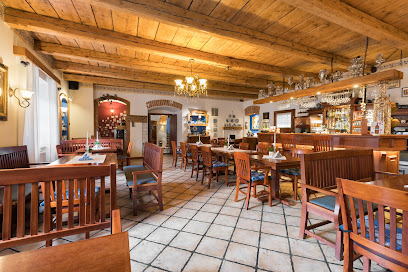
Karczma Ciosana
Discover the heart of Polish cuisine at Karczma Ciosana in Szczyrk – where tradition meets breathtaking mountain views.

Karczma Stary Młyn
Experience authentic Polish cuisine at Karczma Stary Młyn in Szczyrk – where tradition meets taste in a charming setting.

Pierogarnia Bracka
Discover authentic Polish dumplings at Pierogarnia Bracka in Szczyrk - a culinary delight blending tradition with taste.

Restauracja Beskid
Discover authentic Polish cuisine amidst breathtaking scenery at Restauracja Beskid in Brenna.
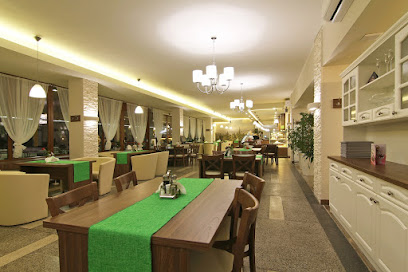
Gościniec Salmopolski Restuaracja i pensjonat
Discover authentic Polish cuisine at Gościniec Salmopolski in Szczyrk – where comfort meets culinary tradition.

Markets, malls and hidden boutiques
Galeria Krakowska
Explore Galeria Krakowska, a vibrant shopping experience in Kraków with diverse shops, dining, and entertainment options for every traveler.

Silesia City Center
Discover a shopping haven at Silesia City Center in Katowice, offering diverse shops, dining, and entertainment for a perfect day out.

Galeria Bałtycka
Discover a shopping paradise with fashion, beauty, and dining at Galeria Bałtycka, Gdańsk's ultimate retail destination.
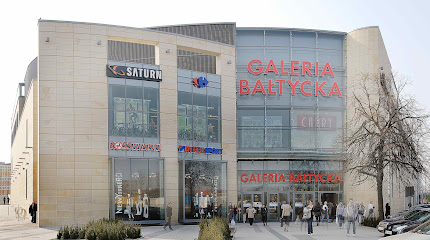
Action
Explore the unique offerings at Action Gift Shop in Żywiec, where local charm meets a diverse selection of gifts and home goods.

Poly Sport
Discover adventure in Wisła with Poly Sport, your ultimate destination for top-notch sporting goods and rental services for all outdoor activities.

Military Zone
Discover unique military surplus gear, clothing, and outdoor supplies at the Military Zone in Żywiec, perfect for enthusiasts of all kinds.

4F Wisła
Explore 4F Wisła for top-quality sportswear in the stunning mountain town of Wisła, Poland - a must-visit for active travelers.

Świat Anime
Explore the enchanting realm of anime collectibles at Świat Anime in Szczyrk, where every fan's dream comes to life.

PINTA - Sklep w Browarze
Explore the best of Polish craft beer and local delicacies at PINTA - Sklep w Browarze, a must-visit outlet store in Wieprz.

Martes Sport
Explore the best in outdoor sporting goods at Martes Sport, Wisła – your one-stop shop for adventure gear!

Action Bielsko-Biała
Explore Action Bielsko-Biała: Your Ultimate Destination for Gifts, DIY Projects, and Unique Home Goods in Bielsko-Biała.

Wyjątkowy Prezent
Explore Wyjątkowy Prezent, Bielsko-Biała's charming gift shop offering unique Polish souvenirs and local artisan treasures.

Natura drugstore
Discover a world of beauty and wellness at Natura Drugstore, your go-to destination for cosmetics, health products, and personal care in Żywiec.

Reserved
Explore stylish and affordable clothing for the whole family at Reserved in Żywiec, Poland's fashion destination.

Pamiatki Regionalne ANETA HALAMA
Explore Pamiatki Regionalne ANETA HALAMA for authentic Polish souvenirs in Szczyrk, where tradition meets creativity.

Essential bars & hidden hideouts
Restauracja Green Pub Sjesta
Discover a delightful fusion of Mexican and Polish cuisine at Restauracja Green Pub Sjesta, Szczyrk's culinary haven for food lovers.

Restauracja Markowa Destylarnia
Experience the authentic taste of Polish cuisine in Szczyrk's charming Restauracja Markowa Destylarnia, where traditional flavors meet warm hospitality.

Chata Wuja Toma
Discover the charm of Chata Wuja Toma in Szczyrk, where exquisite Polish cuisine meets cozy accommodations and wellness retreats.

XOXO Music & Cocktail Bar - Bielsko-Biała
Discover the energetic vibe of XOXO Music & Cocktail Bar in Bielsko-Biała, where exquisite cocktails and live music create an unforgettable nightlife experience.

Angel's Steak & Pub
Discover the culinary delights of Ustroń at Angel's Steak & Pub, where traditional flavors meet craft brewing in a warm, inviting atmosphere.

Pigal
Discover Pigal in Bielsko-Biała: A cozy pub and creperie offering a delightful mix of savory crepes, refreshing beers, and sweet treats.

Chata Na Groniu
Discover the charm of Chata Na Groniu, where culinary excellence meets local art in a breathtaking setting.
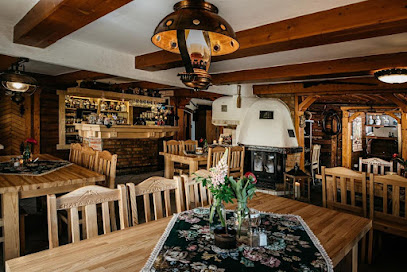
Karczma Ciosana
Discover the authentic flavors of Poland at Karczma Ciosana, a charming restaurant in Szczyrk offering traditional cuisine and stunning mountain views.

Bar-Kawiarnia Pensjonat BASIA
Experience authentic Polish cuisine and a cozy atmosphere at Bar-Kawiarnia Pensjonat BASIA in the heart of Szczyrk, perfect for tourists seeking relaxation.

Restauracja Kuflonka
Discover the best of Polish cuisine and cozy ambiance at Restauracja Kuflonka in Szczyrk, perfect for tourists seeking delightful dining experiences.

Kolejka Smaków
Discover the best of Polish cuisine at Kolejka Smaków, a delightful restaurant in Szczyrk offering local flavors and craft beers in a scenic setting.

The Legendary Żywiec Pub & Restaurant
Savor traditional Polish cuisine and local brews in a cozy pub atmosphere at The Legendary Żywiec Pub & Restaurant, a culinary delight in Żywiec.

Absolem Cocktail & Shisha Bar
Discover the vibrant ambiance and exquisite flavors at Absolem Cocktail & Shisha Bar in Ustroń, perfect for a delightful night out.

Bar Langosz
Experience the warmth of Międzybrodzie Lip at Bar Langosz, where delightful drinks and a cozy atmosphere await you.

Neon & Drink Pub
Experience the vibrant atmosphere and unique flavors at Neon & Drink Pub in Bielsko-Biała, where craft beer meets lively entertainment.

Local Phrases about Silesian Beskids
-
- HelloCześć
[Cheshch] - GoodbyeŻegnaj
[Zhegnai] - YesTak
[Tak] - NoNie
[Nye] - Please/You're welcomeProszę
[Proshe] - Thank youDziękuję
[Jenkooie] - Excuse me/SorryPrzepraszam
[Pzheprasham] - How are you?Jak się masz?
[Yak shay mash] - Fine. And you?Dobrze. A ty?
[Dobrzeh. Ah ti] - Do you speak English?Czy mówisz po angielsku?
[Chi moovish po ang-yelskoo] - I don't understandNie rozumiem
[Nye rozoomyem]
- HelloCześć
-
- I'd like to see the menu, pleaseChciałbym zobaczyć menu, proszę
[Hchyalbim zobachich menu, proshai] - I don't eat meatNie jem mięsa
[Nye yem myensa] - Cheers!Na zdrowie!
[Na zdrovye] - I would like to pay, pleaseChciałbym zapłacić, proszę
[Hchyalbim zapwachich, proshai]
- I'd like to see the menu, pleaseChciałbym zobaczyć menu, proszę
-
- Help!Pomocy!
[Pomo-tsi] - Go away!Idź sobie!
[Eej sob-yeh] - Call the Police!Zadzwoń po policję!
[Zadzvooyn po polits-yeh] - Call a doctor!Zadzwoń po lekarza!
[Zadzvooyn po lekarza] - I'm lostZgubiłem się
[Zgoobee-wem shay] - I'm illJestem chory
[Yes-tem hory]
- Help!Pomocy!
-
- I'd like to buy...Chciałbym kupić...
[Hchyalbim koopich...] - I'm just lookingTylko się rozglądam
[Tylko shay rozh-wondam] - How much is it?Ile to kosztuje?
[Eele to kosh-tooye] - That's too expensiveTo za drogie
[To za drogye] - Can you lower the price?Czy możesz obniżyć cenę?
[Chi mooschesh obnee-zhich chenai]
- I'd like to buy...Chciałbym kupić...
-
- What time is it?Która jest godzina?
[Ktoora yes-t godzeena] - It's one o'clockJest pierwsza
[Yes-t pyerv-sha] - Half past (10)Pół do (10)
[Puw do (10)] - MorningRano
[Rano] - AfternoonPopołudnie
[Popowoodnye] - EveningWieczór
[Vye-choor] - YesterdayWczoraj
[Vchora-y] - TodayDzisiaj
[Jee-sheye] - TomorrowJutro
[Yootro] - 1Jeden
[Yeden] - 2Dwa
[Dva] - 3Trzy
[Tzhy] - 4Cztery
[Ch-teri] - 5Pięć
[P-yench] - 6Sześć
[Sheshch] - 7Siedem
[Syedem] - 8Osiem
[Osh-yem] - 9Dziewięć
[Jev-yench] - 10Dziesięć
[Jesh-yench]
- What time is it?Która jest godzina?
-
- Where's a/the...?Gdzie jest...
[Gdje yes-t] - What's the address?Jaki jest adres?
[Yaki yes-t adres] - Can you show me (on the map)?Czy możesz mi pokazać (na mapie)?
[Chi mooschesh mee pokazach (na map-yeh)] - When's the next (bus)?Kiedy jest następny (autobus)?
[Kyedy yes-t nast-epny (autobus)] - A ticket (to ....)Bilet (do ....)
[Beelet (do ....)]
- Where's a/the...?Gdzie jest...
History of Silesian Beskids
-
The history of the Silesian Beskids dates back to prehistoric times, as evidenced by archaeological findings. Early human settlements were established in the region, and the fertile valleys and abundant natural resources provided sustenance for these early inhabitants.
-
During the medieval period, the Silesian Beskids saw the establishment of numerous settlements. The region became a part of the Kingdom of Poland in the early 14th century. Castles and fortifications, such as the ones in Bielsko-Biała and Cieszyn, were constructed to protect against invasions.
-
Cieszyn Silesia, a historical region that encompasses parts of the Silesian Beskids, has a rich and complex history. It was ruled by the Piast dynasty and later became a part of the Habsburg Monarchy. The region is known for its cultural diversity, with influences from Czech, Polish, German, and Jewish communities.
-
The 19th century brought significant industrial development to the Silesian Beskids. The establishment of factories, railways, and mining activities transformed the region. Towns like Bielsko-Biała became important industrial centers, known for their textile and machine-building industries.
-
The Silesian Beskids were profoundly affected by World War II. The region witnessed significant military activity and was occupied by Nazi Germany. Many of the local Jewish population were tragically deported to concentration camps. The war left a lasting impact on the cultural and social fabric of the area.
-
After World War II, the Silesian Beskids became part of the People's Republic of Poland. The region underwent significant changes, including the nationalization of industries and the rebuilding of war-torn infrastructure. The area's natural beauty began to attract tourists, leading to the development of resort towns and recreational facilities.
-
The Silesian Beskids are renowned for their rich cultural heritage. The region hosts numerous folklore festivals, showcasing traditional music, dance, and crafts. Wooden churches, known as 'kościółki,' and local cuisine, such as 'oscypek' cheese, are integral parts of the region's cultural identity.
-
Today, the Silesian Beskids are a popular destination for outdoor enthusiasts. The region offers a range of activities, from hiking and skiing to exploring historical sites and cultural landmarks. The Beskid Loop Trail, a scenic hiking route, attracts visitors from around the world, providing a glimpse into the natural and historical beauty of the area.
Silesian Beskids Essentials
-
The Silesian Beskids are located in southern Poland, near the border with the Czech Republic and Slovakia. The nearest major city is Katowice, which has an international airport (Katowice Airport). From Katowice, you can take a train or bus to towns such as Wisła or Ustroń, which are popular starting points for exploring the region. Alternatively, you can drive, as the area is well-connected by road.
-
Within the Silesian Beskids, local transportation options include buses, minibuses, and taxis. Many attractions and trails are accessible on foot or by bike. Renting a car can be convenient for exploring more remote areas. During winter, special ski buses operate to transport visitors to various ski resorts.
-
The official currency in Poland is the Polish Zloty (PLN). Credit and debit cards are widely accepted in hotels, restaurants, and shops, but it is advisable to carry some cash, especially when visiting smaller villages and rural areas. ATMs are available in most towns and tourist areas.
-
The Silesian Beskids are generally safe for tourists. Standard precautions should be taken, such as avoiding poorly lit areas at night and keeping an eye on personal belongings in crowded places. There are no specific high-crime areas targeting tourists, but it's always good to stay vigilant.
-
In case of emergency, dial 112 for immediate assistance. Local police stations and medical facilities are available in towns like Wisła and Ustroń. It is recommended to have travel insurance that covers medical emergencies. Pharmacies are also available for minor health issues.
-
Fashion: Do dress in layers and wear appropriate footwear for hiking and outdoor activities. Avoid overly casual clothing when dining in nicer restaurants. Religion: Do respect local customs and traditions, especially when visiting churches. Public Transport: Do be courteous and give up your seat for elderly passengers. Don’t be loud or disruptive. Greetings: Do greet people with a handshake and a smile. Eating & Drinking: Do try local dishes and accept food offerings graciously. Don't refuse hospitality, as it is considered impolite.
-
To experience the Silesian Beskids like a local, visit local markets to buy fresh produce and traditional Polish goods. Engage with locals who are often friendly and willing to share stories about the region's history and culture. Don't miss tasting local delicacies like oscypek (smoked cheese) and trying regional beverages. For a unique experience, attend a local festival or event, which can provide deeper insights into the area's traditions and way of life.
Nearby Cities to Silesian Beskids
-
Things To Do in Žilina
-
Things To Do in Ostrava
-
Things To Do in Martin
-
Things To Do in Gliwice
-
Things To Do in Krakow
-
Things To Do in Zakopane
-
Things To Do in Banská Bystrica
-
Things To Do in Trenčín
-
Things To Do in Poprad
-
Things To Do in Czestochowa
-
Things To Do in Olomouc
-
Things To Do in Opole
-
Things To Do in Tarnow
-
Things To Do in Kielce
-
Things To Do in Prešov













